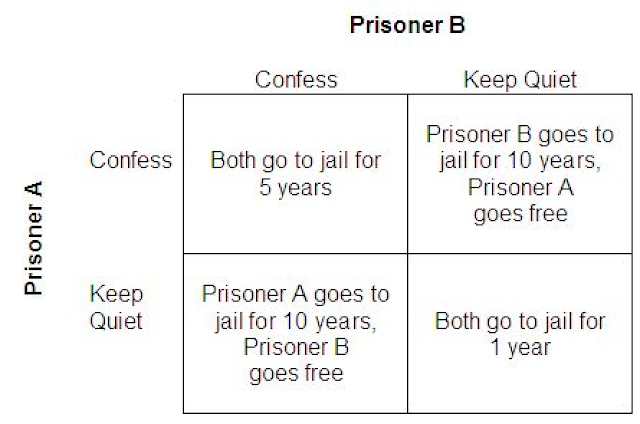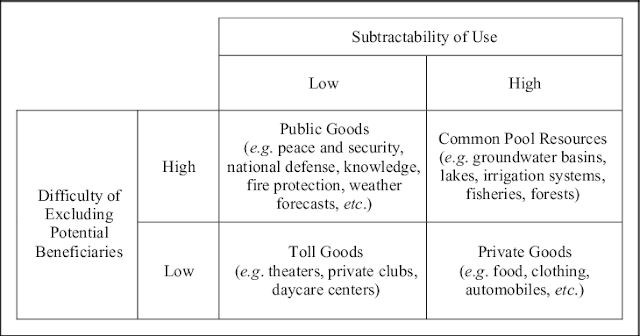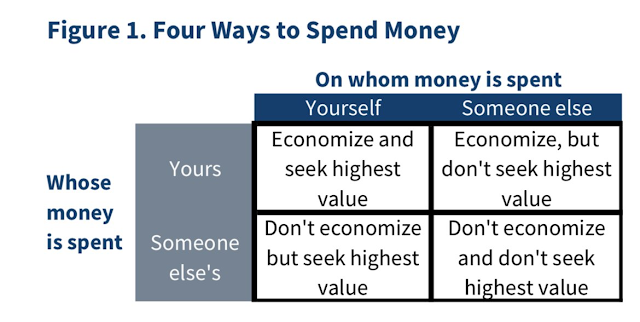“The Opportunity Cost of Socialism” Why is the Council of Economic Advisers producing party political propaganda for the GOP? As many folks have pointed out, the “report” is rather bizarre. My favorite part is Figure 1, which summarizes Milton Friedman’s argument that people spending “their own money” are “more careful how much to spend and on what the money is spent.” This, of course begs the question of how that money came to be defined as “their own.” Let’s complicate that story, though, with a couple more matrices: First, Prisoner’s Dilemma: Figure 2: Prisoner’s Dilemma Next, Elinor Ostrom’s typology of property: Figure 3: Typology of property Figure 1 assumes that there is only one kind of decision situation and only one kind of good.
Topics:
Sandwichman considers the following as important: Journalism, politics, US/Global Economics
This could be interesting, too:
Robert Skidelsky writes Lord Skidelsky to ask His Majesty’s Government what is their policy with regard to the Ukraine war following the new policy of the government of the United States of America.
Joel Eissenberg writes No Invading Allies Act
Ken Melvin writes A Developed Taste
Bill Haskell writes The North American Automobile Industry Waits for Trump and the Gov. to Act
“The Opportunity Cost of Socialism”
Why is the Council of Economic Advisers producing party political propaganda for the GOP? As many folks have pointed out, the “report” is rather bizarre. My favorite part is Figure 1, which summarizes Milton Friedman’s argument that people spending “their own money” are “more careful how much to spend and on what the money is spent.” This, of course begs the question of how that money came to be defined as “their own.”
 |
| Figure 2: Prisoner’s Dilemma |
 |
| Figure 3: Typology of property |

